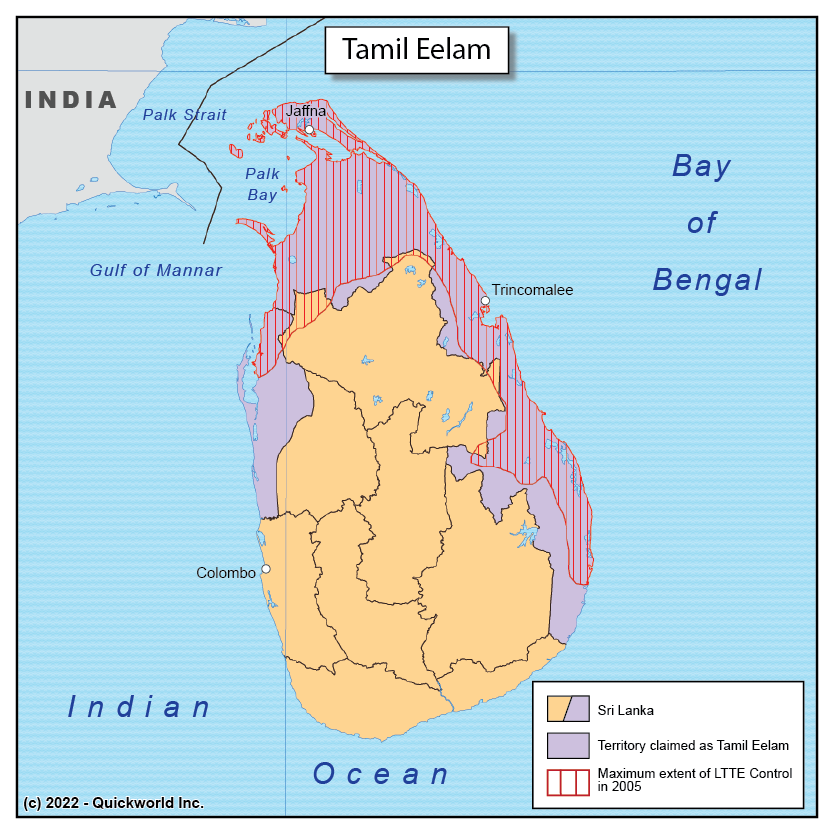Our Series on Secessions takes us to the Island of Ceylon, which is coterminal with the nation of Sri Lanka.
Sri Lanka has a long history of foreign influence, with both Arab and European traders establishing outposts on the island and leaving a lasting mark. Britain was the colonial power from 1796 to 1948. The modern ethnic makeup of the country is split between a majority Buddhist Singhalese population and a minority Hindu Tamil population, who have coexisted for many centuries. There are also smaller populations of mixed Arab and indigenous Muslims, and mixed European and indigenous Christians. Finally, there is a significant population of Tamils of Indian origin who were brought in by the British to work in the plantations of the Central Highlands. While similar to the indigenous Tamils, these people live in a separate part of the island.
The independence of Sri Lanka in 1948 led to a unitary state controlled by the Singhalese majority. Tensions quickly rose between the two largest communities, with outburst of violence starting in the 1950s. Violence escalated into a full civil war in the early 1980s. Military gains by the Liberation Tigers of Tamil Eelam (LTTE) in the Northwestern and Eastern coastal areas led to the creation of a de facto state and the call for a separate country. India sent an interposition force to the island in 1987, but LTTE maintained control over predominantly Tamil areas, and forced the Indians to withdraw in 1990. The last phase of the civil war saw gradual gains by the Sri Lanka armed forces, with a total defeat of the LTTE in 2009.
As of 2022, the government of Sri Lanka controls the entire island and officially calls for a political solution to the crisis. However, a Tamil government in exile retains strong support from Sri Lankan Tamils as well as from the large Ceylonese Tamil diaspora.
More on Tamil Eelam
The Tamil Eelam Secession


